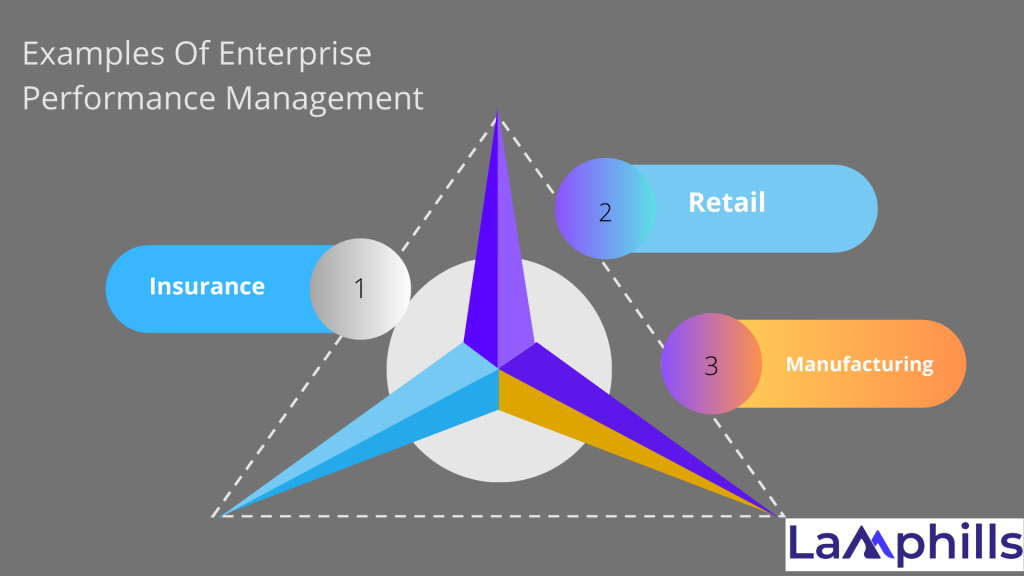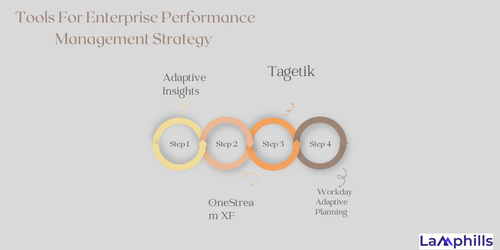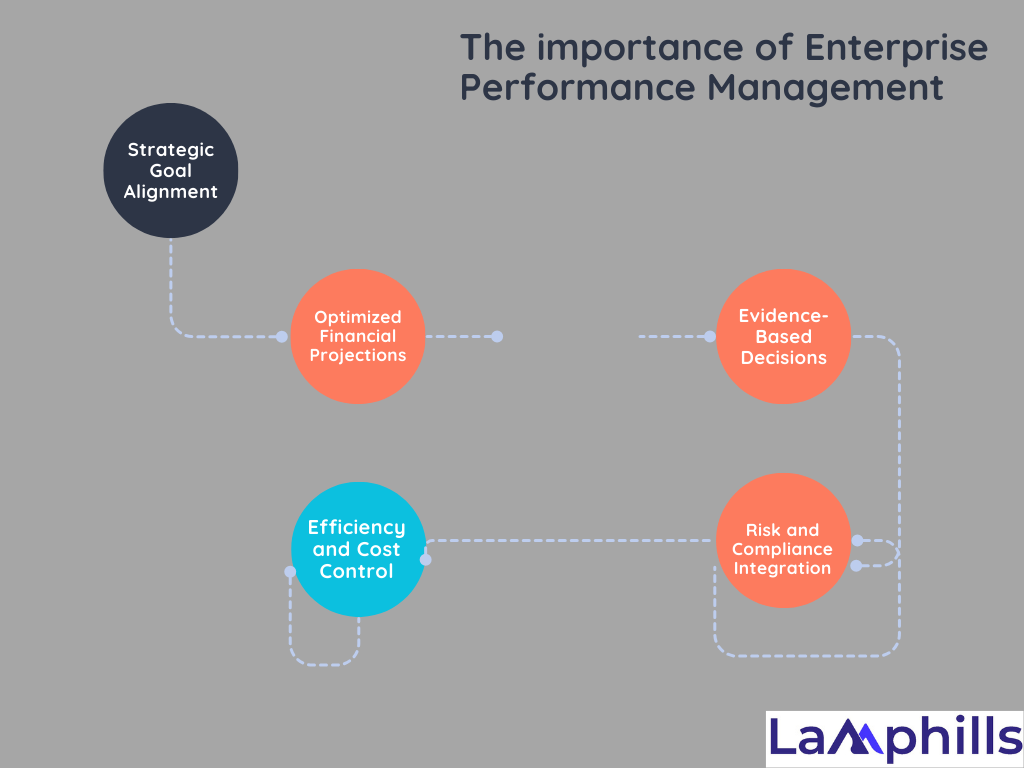Enterprise Performance Management (EPM) is simply a technology solution; it is a fundamental framework for aligning business strategies and execution across a company. In my two years of experience working in various positions inside finance and strategic planning departments, I’ve seen directly how EPM transforms firms. Whether navigating volatile market shifts or optimizing day-to-day operations, EPM delivers the tools and insights required to drive success.
This means, that occasionally, you should take a fresh look at your business planning and performance management. What has been working well? What has not? Where do I begin? Why are modern organizations seeking to improve their performance management capabilities? And what can we expect in the future of finance?
This is because the survival of every business solely rests on its ‘Performance Management’ scale, and I can tell you from experience that every surviving organization today has a standard measure of performance management. Now, I feel you might want to ask, “What exactly is enterprise performance management?. Read on to find answers in this article.
Key Takeaways
- EPM Is More Than Just Technology—It’s a Holistic Management Approach: it is a comprehensive methodology that drives organizational performance and strategic success.
- Enterprise performance management (EPM) is essential for aligning every department within an organization toward common strategic goals. It enables cohesive action across all levels, ensuring that initiatives from
- EPM tools facilitate comprehensive performance analytics, enabling organizations to analyze past performance and predict future trends. This means companies can confidently navigate market uncertainties and capitalize on strategic opportunities with the insights provided by EPM.
- Integrating risk management and regulatory compliance into the EPM framework is crucial for businesses operating in heavily regulated environments. This integration is vital for maintaining operational integrity and avoiding legal or financial penalties, especially in industries like finance and insurance.
A Brief History of EPM
EPM’s journey is a testament to the growth of business processes. Before the digital age, performance management was a laborious and time-consuming procedure. I recall my early career days when strategic planning sessions included stacks of paper, countless discussions, and painstaking data consolidation from many sources. Because of this time-consuming process, data was frequently out of date by the time reports were completed.
The 1970s saw the debut of spreadsheet software such as Lotus 1-2-3 and VisiCalc, signaling the start of a transition. Finance staff now had a mechanism to expedite planning and reporting, however, these tools still needed significant human effort and were prone to errors.
The late 1990s and early 2000s saw the rise of email and connected technologies, paving the way for more collaborative and efficient EPM solutions. During my tenure at a mid-sized manufacturing company, we transitioned from siloed systems to a more integrated approach, leveraging email and early EPM software to improve data accuracy and decision-making speed.
What is Enterprise Performance Management?

Enterprise Performance Management (EPM) is a critical structure for managing and enhancing organizational performance. It integrates a variety of business processes and technologies to assist businesses in planning, monitoring, and achieving objectives. Simply put, enterprise performance management is the intermediary in every organization that connects the various parts of a business to improve service and value delivery.
Having worked with many institutions, or, let’s say, companies, often in the financial and strategic planning departments, I can declare that performance management is crucial for every firm, and its importance cannot be overstated for any business to survive. This is why many departments are always looking for new and more effective ways to manage performance.
Think of a consumer products firm that wants to lower its carbon footprint. EPM systems allow every department, from R&D to marketing, to coordinate their efforts toward this aim. The R&D team may concentrate on producing sustainable materials, while marketing stresses the company’s commitment to sustainability in its campaigns. The result is a unified strategy that propels the organization toward its goals.
At its foundation, enterprise performance management is about aligning all aspects of an organization with its strategic objectives. It combines planning, budgeting, reporting, and analysis into a single framework, improving decision-making and operational efficiency.
Key Elements of Enterprise Performance Management
Enterprise performance management systems, like most traditional software, were first installed on-premises. Today, an increasing number of EPM software solutions are hosted in the cloud. A cloud platform offers a variety of advantages, including increased data storage capacity, improved security, and easier integration with complementary applications like financial consolidation, financial close, planning, tax reporting, profitability, cost, account reconciliation, and others. Here’s how the EPM process normally works:
- Access data from all business units. Use the cloud’s agility to access financial and operational data from business divisions across the organization, such as IT, marketing, HR, operations, and sales. Data can be obtained from e-commerce systems, front- and back-office applications, data warehouses, and third-party sources. Complete, precise data enables you to make more confident judgments and respond to disruptions faster.
- Develop a strategy plan. Use EPM data analytics to create forecast models and ad hoc simulations with various dimensions. Make data-driven decisions to maximize profitability and performance while also ensuring alignment with your strategic plan.
- Budget. Modern EPM technologies provide flexibility and scalability for planning and budgeting. They enable organizations to crowdsource input from multiple departments, resulting in a more thorough and accurate financial strategy. Collaborate across lines of business to crowdsource strategies and create flexible budgets. Use automated procedures to ensure a clean and efficient process.
- Track and report. Use real-time data to evaluate enterprise performance and determine whether changes are necessary. Prepare reports that comply with business and regulatory guidelines.
- Assess and analyze. Compare performance and profitability to the strategic plan. Identify new opportunities, address areas of underperformance, and use the intelligence to guide the next cycle of strategic planning.
Examples Of Enterprise Performance Management In the Business Sector

EPM is versatile and supports various business needs across different industries. Here are some examples:
#1. Insurance
These firms must constantly alter their business models in response to a variety of variables, including environmental, regulatory, and market challenges, making it more difficult to reach profitability goals. EPM enables insurance businesses to manage costs efficiently and conduct extensive profitability studies, which assist in the increasingly complicated and detailed calculations needed to determine profit potential.
#2. Retail
Retailers have the problem of handling massive amounts of consumer data while also adjusting to digital retail developments. EPM technologies are useful for analyzing transaction-level profitability and identifying new income streams.
With many consumers adopting a digital purchasing strategy, this industry has undergone tremendous transformation, including access to a new and expanding pool of rich consumer data. EPM enables merchants to analyze and simulate profitability down to the transaction level, thereby identifying new income streams and consumer groups to help develop the firm.
#3. Manufacturing
Manufacturers deal with complex supply chains and need accurate cost and profitability insights. EPM systems provide the data needed to make informed “build or buy” decisions.
Manufacturing has suffered as a result of global supply chain disruptions. EPM gives precise cost and profitability statistics to manufacturers, allowing them to make “build or buy” decisions. Manufacturers may safeguard margins and ensure profitability by leveraging real-time data insights. Another question came to mind: “What tool can be used for enterprise management?”
Tools For Enterprise Performance Management Strategy

There are four tools I have explored in my strategic planning and management journey, and they are: There are other tools, but these are my ratings as the most effective, so let’s get familiar with these four.
#1. Adaptive Insights
This cloud-based performance management software offers solutions for budgeting, forecasting, reporting, and data analytics to help with financial planning and decision-making. It provides comprehensive budgeting, forecasting, reporting, and analytics capabilities, allowing businesses to streamline financial planning processes and make data-driven decisions. Adaptive insights are extensively utilized throughout industries and trusted by businesses of all kinds, from small to large.
#2. OneStream XF
This is a comprehensive platform for financial planning, consolidation, reporting, and analytics that streamlines complex financial operations and enhances organizational performance. OneStream XF provides a unified solution, reducing the requirement for data integration and maintenance activities. This unified strategy increases productivity and data accuracy, allowing firms to gain faster insights and make better decisions. Furthermore, OneStream XF is highly scalable and customizable, making it ideal for businesses of all sizes and industries.
#3. Tagetik
This is a unified performance management solution that offers capabilities for budgeting, planning, forecasting, financial consolidation, and reporting, along with advanced analytics and predictive modeling. Tagetik offers advanced analytics and predictive modeling features, empowering organizations to make informed decisions and drive business growth. It is widely used by enterprises across various industries to enhance financial management and achieve their strategic objectives.
#4. Workday Adaptive Planning
This scalable performance management solution facilitates financial planning, budgeting, and forecasting, allowing firms to quickly adjust to changing business conditions. Workday Adaptive Planning is well-known for its user-friendly design, which enables financial professionals and other users to explore and use its capabilities without extensive training. It also offers extensive reporting and analytics capabilities, allowing enterprises to get insights into their financial performance and make data-driven decisions that drive company success. To summarize, corporate performance management is more than simply numbers and processes; it is about aligning objectives, making informed decisions, and driving success.
By focusing on strategic planning, financial management, operational efficiency, and risk mitigation, it helps businesses navigate challenges and seize business opportunities. I want you to see enterprise performance management as not just a scheme; but a mindset that empowers organizations to stay agile, achieve excellence, and thrive in a competitive market.
Enterprise Performance Management: Business Processes
The business processes associated with EPM can be broken down into five functional areas:
#1. Strategic Modeling
Strategic modeling allows users to develop long-range strategic forecast models. It is useful for detailed forecasting and analysis of trends and frees up time spent on manually gathering data. Strategic modeling gives users a sense of confidence in the accuracy of their projections, reports, and audits.
#2. Planning and Budgeting
Using EPM software for planning and budgeting gives users flexibility and scalability with their forecasts. While standard EPM products include out-of-the-box planning content, others, such as Oracle EPM, go a step further and provide the user with the ability to create custom parameters for future planning and budgeting.
#3. Close and Consolidation
EPM software can be used for streamlining financial closing and consolidation, making it easy for users to report on their business with confidence. This support gives users peace of mind when it comes to meeting global regulatory requirements and provides the requisite transparency of data for stakeholders both internal and external.
#4. Reporting
Financial reporting has been revolutionized by EPM software. It provides a format for neat, consistent, standardized reporting. EPM software can be used to consolidate briefs into executive reports, distribute report content to stakeholders, and integrate financial decisions, among other functionalities.
#5. Performance Analytics
Analyzing past performance is easier and more accurate than ever before with EPM technology. EPM technology is used to conveniently analyze trends across years, divisions, and against planned performance. This data creates a holistic picture of the enterprise that is invaluable for leadership, management, and stakeholders.
The importance of Enterprise Performance Management

EPM is a platform that helps organizations manage and dynamically align strategic planning and goals with people and processes. EPM systems provide the opportunity to combine silos and fragmented planning processes, allowing for more flexible, responsible, and transparent performance tracking and goal setting throughout the enterprise. It achieves this by providing three main advantages: The following are the fundamental importance and distinct tasks of enterprise performance management.
#1. Strategic Goal Alignment
This means that every aspect of the business, from individual individuals to entire departments, is working toward the same strategic goals. Let’s imagine a company that wants to be a leader in sustainable products. Strategic objective alignment ensures that the R&D team develops eco-friendly materials, the marketing team prioritizes sustainability in campaigns, and the operations team implements green production practices. Everyone’s efforts are combined to attain one shared aim.
# 2. Optimized Financial Projections
This entails developing accurate and realistic financial projections that drive budgeting and financial planning, letting companies deploy resources effectively, and preparing for future financial scenarios and events. A retail company that analyzes previous sales data, market trends, and seasonal factors to forecast future sales and expenses will outperform other companies that do not employ this method. This would assist businesses in determining how much merchandise to order, preparing for peak seasons, and setting realistic sales expectations. As a result, they avoid overstocking and understocking, which improves their financial success.
# 3. Evidence-Based Decisions
This refers to making business decisions based on data analysis and factual evidence rather than intuition or guesswork. A company that is considering launching a new product, instead of relying on gut feelings, could analyze customer feedback, market research, and sales data from similar products. This data-provided approach helps them make a well-informed decision about product features, pricing, and marketing strategies, increasing the likelihood of the product’s success.
# 4. Efficiency and Cost Control
This entails optimizing operational processes to optimize productivity and reduce costs without sacrificing quality. Consider the case of a small bakery. This bakery is now looking to increase its productivity and cut costs. The bakery examines its everyday operations and discovers that its bakers spend a significant amount of time waiting for ovens to become available.
But by purchasing another oven, the bakery will be able to bake more batches at the same time, minimizing idle time and increasing output. The bakery also notes that they are regularly ordering small quantities of ingredients, which increases delivery costs.
They can lower total ingredient costs per unit and avoid frequent shipping fees by switching to bulk purchases. With these changes, the bakery can produce more goods in less time and lower their ingredient costs, leading to higher profitability and more efficient operations.
# 5. Risk and Compliance Integration
This ensures that risk management and regulatory compliance are built into all business processes, helping organizations proactively address potential risks and adhere to laws and regulations. A financial institution that integrates risk assessment tools into its loan approval process has a lower chance of losing funds.
This is because this strategy helps them evaluate the creditworthiness of applicants more accurately, reducing the risk of defaults. At the same time, they ensure that all transactions comply with relevant regulations, avoiding legal penalties and fostering customer trust.
The Three ‘P’ Principles Of Enterprise Performance Management
While working with one of these financial institutions, I had three principles of enterprise performance management in place, and this was what I called my “P-secrets.”
#1. Planning
This includes setting strategic goals, creating budgets, and developing projections to guide the organization’s future direction. I always have it in mind that Planning ensures that resources are allocated efficiently and that the organization is prepared for various incidents.
#2. Performance
This focuses on monitoring and measuring the organization’s activities against the set plans and goals. It involves tracking key performance indicators, analyzing data, and reporting on progress to ensure that the organization stays on track and can make informed decisions.
#3. Profitability
This element focuses on analyzing and controlling an organization’s financial performance. It includes analyzing revenue streams, reducing costs, and maximizing financial outcomes to ensure the organization’s long-term financial health and prosperity. So, keep in mind that, for a business to be profitable, tactics such as cost containment and access to income streams must be implemented.
Who uses EPM?
EPM solutions are primarily used by CFOs and the office of finance, while other functional areas, such as HR, sales, marketing, and IT, use EPM for operational planning, budgeting, and reporting.
What’s the difference between EPM and ERP?
ERP activities include manufacturing and customer relationship management. EPM systems focus on financial and operational processes. This makes them simpler and cheaper to deploy. Also, they coordinate financial planning and ensure financial consolidation.
What is the EPM framework?
EPM is a continuous cycle of management, from the planning of business activities, by considering strategic objectives and options, to allocating business resources to the most profitable areas, and then monitoring performance and taking corrective action.
Is EPM a methodology or a tool?
It is important to clarify that EPM is not just software – it is a business endeavor to seek effectiveness and measure and enhance performance in your organization.
Conclusion
EPM is a very useful tool for finance managers, CFOs, and other management personnel. Effective usage of EPM technology pervades all aspects of an operation, providing leadership with a more complete picture of an organization’s health. However, without an effective EPM strategy and assistance, trust me, the process can be overwhelming.
References
- edox.com/en/blog
- us-analytics.com
- gartner.com
- sap.com






